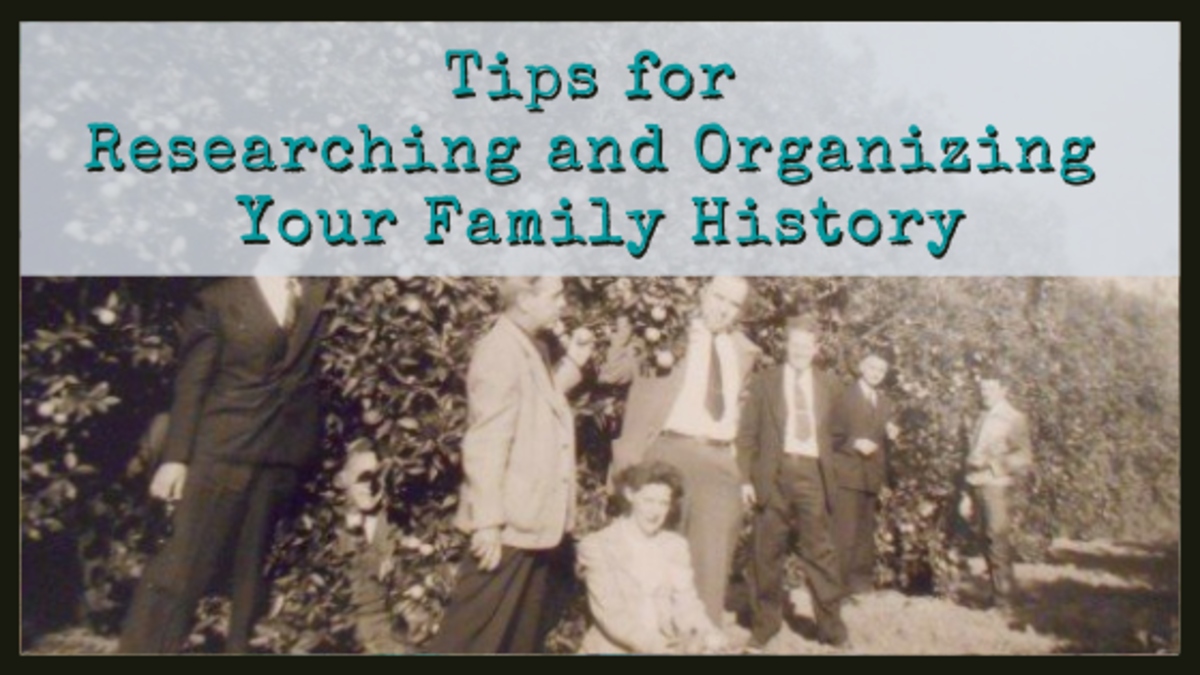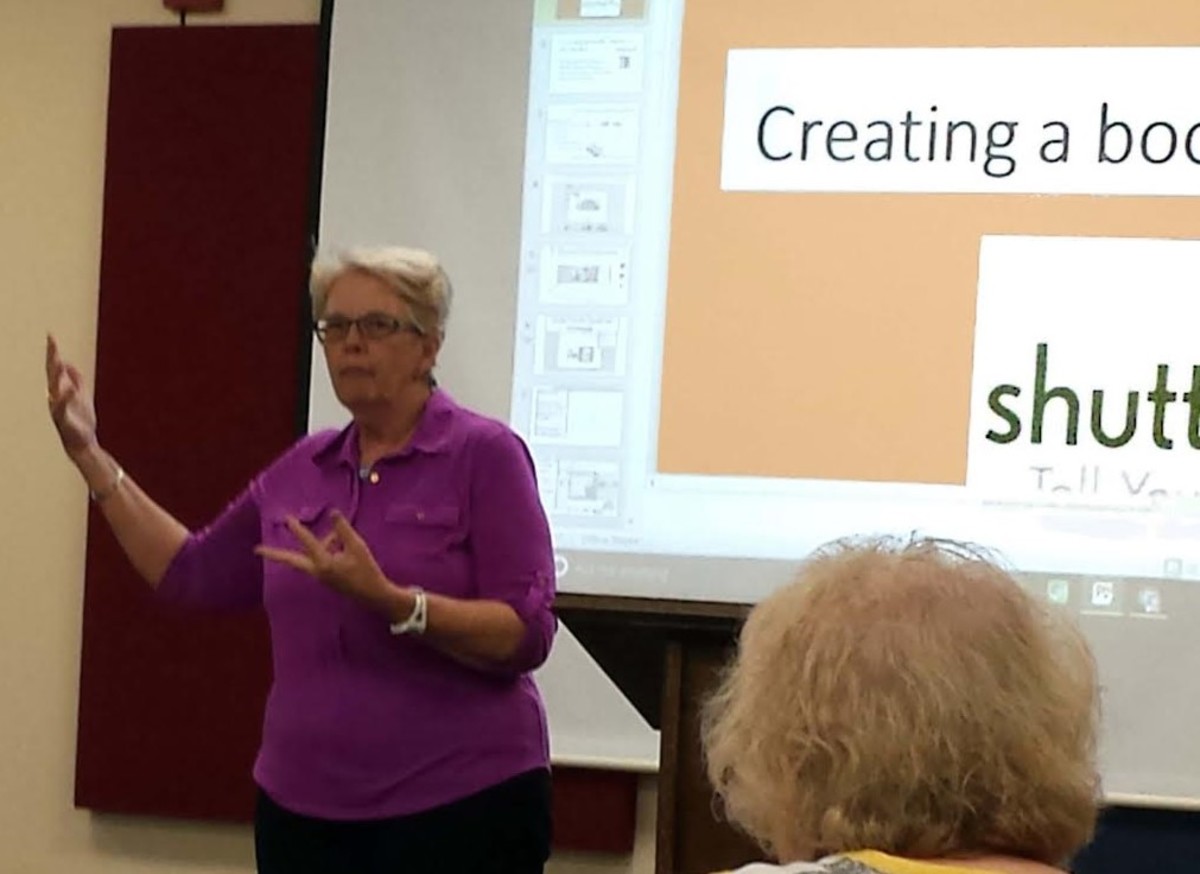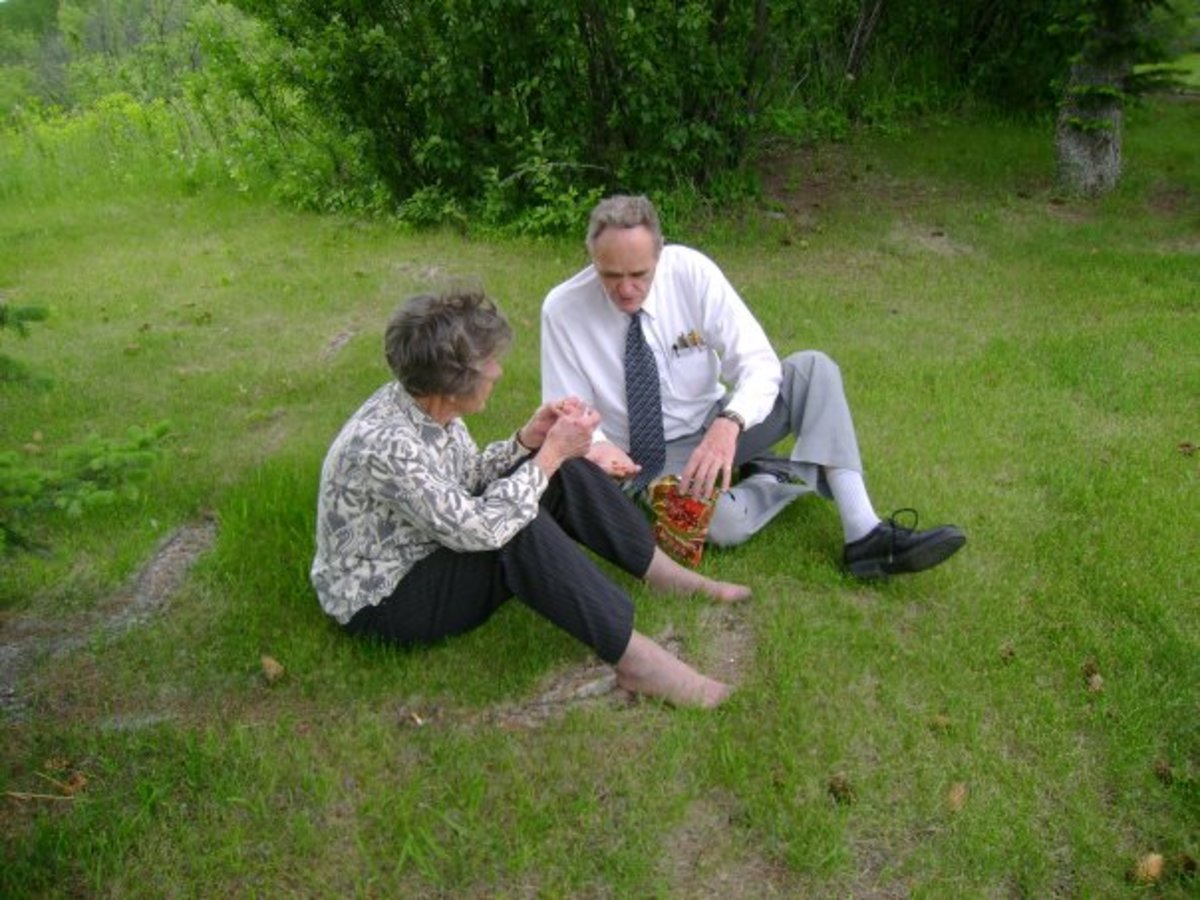Geneaology - Common Mistakes We All Make When Researching Our Family

Many of us begin our family history research for simple reasons. There may be a deep, dark family secret we hope to uncover or it may be for no other reason than wanting to create a family tree to hang on our wall. As beginner family history researchers, there are some common mistakes we all make and they can be costly. Trust me, I learned the hard way. I've spent as many hours going back to correct bad information as I have moving forward with new information. It happens to all of us eventually.
If you are going to spend hours and hours researching, you want that time to be well spent and have it mean something in the end. These five tips can help you avoid mistakes and wasted time.
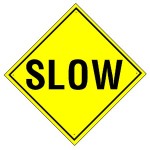
Take It Slow
If you are new to rgeneaology and family history, you are probably excited and can't wait to build lots of information on your ancesry. I offer a word of caution here. Rushing to collect a lot of data in a short amount of time can result in a family tree that is inaccurate and useless to everyone involved.
With so much data available online now, it is easy to find data on people with the same name as your ancestor. That doesn't mean it is your ancestor. It is important to cross-check dates, other members in the household (census data), and age with what you know.
Take your time and make sure the data you are recording is actually the person you think it is.
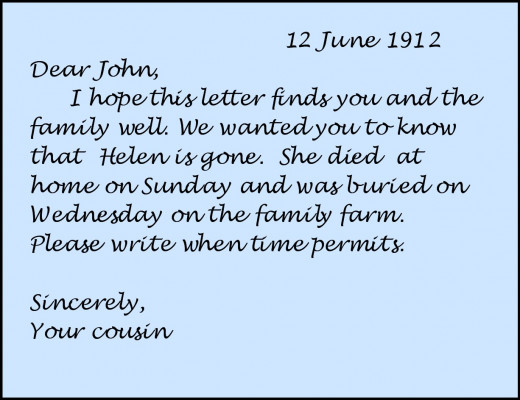
Verify Handwritten Data
Handwritten data can often be inaccurate and can lead you down the wrong road. If you want your geneaology data to mean something, always verify handwritten information with a secondary source. The letter in this image is a good example. There are two potential problems with assuming that this letter represents the facts.
- There are no last names. Helen who? John who? Cousin who?
- There is a date but, is it correct? Can you verify that your "Helen" died on a Sunday prior to the 12th of June in 1912?
Your family history data should be double-checked and verified with a death certificate or a cemetery record. Death certificates become public information when the person has been dead for fifty years or more and can be obtained (for a small fee) from the Bureau of Vital Statistics in the appropriate state. There are some Internet sources as well that may provide this data but most require a paid subscription.
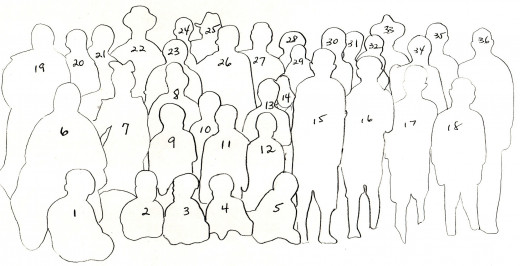
Relatives, Servants, and Boarders
When extracting ancestry data from census records, keep in mind that our ancestors frequently had boarders, servants, or the children of their relatives living with them. Sometimes they intentionally misrepresented the household residents to avoid paying taxes. A census record can be misleading. Our ancestors lives were very different from ours. Don't assume anything just because you see it on a census. Just because Susan is listed in the household of Uncle Arthur doesn't mean she is uncle Arthur's child. Always verify the members of the household with secondary sources.
- Relatives: It was common practice for our ancestors to take in another relative's child.
- Boarders: Our ancestors often took in boarders to help make ends meet.
- Servants: Even the poorest of our ancestors sometimes had domestic help living in the home that may or not have been related to the family.
Remember, times were different and life was often hard for our ancestors. Death and disease frequently forced families make alternative living arrangements. The Census does not always present an accurate portrait of the family make-up. Cross-check and verify your family history data.

Analyze Your Data Periodically
It's time well spent. Set aside some time periodically to run reports on your genaology data. Grab a cup of coffee and study the charts. You will be amazed at the problems you will discover. No matter how precise we are in our data collection, we all make the proverbial typos. We all transpose numbers and we all have that little widget in our brain that will substitute spell common words that can often be confused. You know the words. Some common ones are seem/seam, here/hear, their/there, and bear/bare. You are human and you will do it. Trust me.
Dates can be a nightmare. The software you use may expect you to enter the date as dd/mm/yyyy but in your creative projects, you want the date to be mm/dd/yy. It is just all too easy to make a mistake. I recently created a hardback book on my Dad's family through Shutterfly. I checked and double-checked for mistakes and had my brother and my niece proofread it for errors. We were all satisfied that it looked great. When the printed version arrived, the dates were wrong for one whole family. To this day I don't know how we all missed it but, it happened. Don't make the same mistake. Analyze your data.

Can You Trust Someone Else's Data?
No, to give you a simple answer. There are many places on the Internet where folks can create or store a family tree. Just because you discover a site with data on your long lost relatives does not mean the information is accurate. Sure, when you find it there is that small voice inside that tells you to take the easy way out and copy the data but, you are risking your reputation as a researcher. And, you are taking a chance on looking like a total idiot at the next family reunion.
Never assume that someone else is a careful researcher like you. Bad data is just that - bad data and you don't want to perpetuate it. If you find inaccurate data on the web, should you notify the owner? It's up to you but I do. It isn't always welcomed but I treat people the way I would want to be treated. If someone tells me there is bad data in my research, I want to verify first that it's bad and if it is, I want to fix it.
More Hubs on the Subject
- Family History - Documenting The Source Of Your Dat...
If you want your family to take your family history work seriously, it is important to document the source of your discoveries. That documentation is a road map back to the source when discrepancies in your genealogy data occur. It is inevitable so b - Family History - Cemeteries, The No-cost Resource fo...
Researching your family history doesn't have to be costly. Cemeteries are a good place to start and it doesn't cost a thing to start adding to that family tree. Learn how to use this valuable resource for your genealogy research. - Family History - Tips For Interviewing Elderly Relat...
Does your family history contain a story that no one wants to talk about. Here you'll find some tips for getting your relatives to share those stories that are an important part of your family tree and your genealogy research.
What Gives Me The Right To Tell You What Not To Do?
Nothing actually. But I feel like an authority on these five topics because I've made every single mistake I've written about. As a new family history researcher back in the 70's, I didn't have a clue what I was doing. I copied everything I found into my database. As time went on, I started documenting my sources. After all these years, I have learned the importance of analyzing my data and I promise you it is worth the time. When I hit a road block, I use it as a sign to stop and analyze for a while. We live and learn.
My data is cleaner today than ever because of the lessons I've learned through these mistakes but my data is still not perfect. I will never be perfect but I want it to be the best it can be. I've spent all of my adult life working on it and it is my passion. Ultimately, it may be the only written record of our family so, it is my responsibility to make it as accurate as possible.
Whether you're searching for your roots or just want to give a gift of a small family tree, I hope you will put your best effort into making it accurate for the next generation. Years from now your descendants may discover your work in an old box in the basement or in the local library. Once it's in print, your work, big or small, it becomes a historical record for someone. Give it the best you have for future generations.
© 2012 Linda Crist, All rights reserved.




